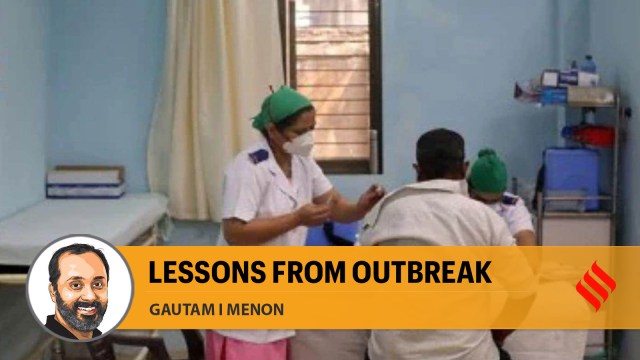Opinion GBS outbreak in Pune should push us to think harder about equitable use of water
If a substantial portion of a relatively well-governed, mid-sized Indian city can be affected by a water-borne infection, what does this imply for the quality of the water we drink?
 GBS is a neurological condition in which the immune system mistakenly attacks its own peripheral nerves.
GBS is a neurological condition in which the immune system mistakenly attacks its own peripheral nerves. Starting in January this year, hospitals in Pune began to see an unusual increase in the numbers of patients presenting with a rare neurological condition. The overall numbers of cases of this condition, called Guillain-Barre Syndrome or GBS, peaked in February. New cases from the Pune Municipal Corporation (PMC) area have declined precipitously since the beginning of March, indicating an end to the outbreak. Among the more than 200 confirmed cases, as of a few days ago, around 12 deaths have occurred, while about 24 patients remain in the ICU.
GBS is a neurological condition in which the immune system mistakenly attacks its own peripheral nerves. Within days, a patient can lose the ability to walk. In severe cases, the ability to breathe or swallow can be compromised. This calls for immediate ICU admission.While patients will very largely recover (it may take weeks to months), a small fraction will die. Some survivors will experience long-lasting neurological consequences.
What’s unusual about the Pune outbreak is that the number of cases is so large. As an example, the USA, with a population of about 340 million, reports GBS cases numbering between 3,000 and 6,000 cases in a typical year.
For a city of Pune’s size, approximately 7 million with surrounding areas, this would translate to fewer than a hundred cases in a year, across the city. But numbers much larger than these have been reported in the space of barely two months. The Pune outbreak is the largest reported in India so far. It is also among the largest in the world, comparable in size to earlier outbreaks in Peru and Brazil.
GBS can be triggered by any number of infections, both bacterial and viral. In some fraction of the Pune patients, tests have reported an infection by the bacterium Campylobacter jejuni. In a number of other cases, a norovirus infection was detected.
Both infections spread through contaminated water and food.They are associated with diarrhoea, vomiting and possibly a fever. A few contaminated water sources supplying Pune and its surrounding villages appear to be a likely reservoir for these infections.
With that background, a very rare syndrome, typically associated with a gastro-intestinal infection from a water-borne bacterium or virus, why was the outbreak so large?
The most reasonable explanation is that these numbers betray a very considerable burden of infection. If even one in 100,000 patients with an underlying water-borne infection go on to develop GBS, the numbers associated with the Pune outbreak would then suggests numbers of around a million infected at some time across those two months.
While not all of those infected will develop symptomatic disease, the very possibility of so many infected should give us pause. If such a substantial portion of a relatively well-governed, mid-sized Indian city can be affected by a water-borne infection, what does this imply for the quality of the water we drink? What governance mechanisms exist to monitor this quality and can we draw any lessons from their failure here?
The contaminated water linked to the cases in Pune have been traced to wells, as well as to some reverse osmosis (RO) plants drawing water from them. Several RO plants close to and within affected areas of Pune have been ordered to be closed after they failed inspections. But investigations have also clarified that such plants operate in a regulation-free zone, with municipal bodies having no oversight over them. Concerns have also been raised about untreated sewage and wastewater flowing into the Bhima river, a source of Pune water.
Across India, the governance of water has recently come under increasing scrutiny. Pollution control boards, charged with examining and regulating air and water quality, are understaffed. Flaws in regulatory design have tended to favour polluters. A lack of expertise in the boards, coupled with frequent transfers and vacancies in important posts, have further hampered their functioning. Judicial interventions have helped to bring these problems into public view, but public concerns around the state of the environment appear to be only triggered by events on the scale of the recent GBS outbreak.
most read
Water and sanitation impact every aspect of sustainable development. A lack of water security is an important driver of migration. Increased food insecurity and attendant health risks especially impact women as well as the poorest. The availability of water also lies at the core of our ability to adapt to climate change. Currently, water-stressed cities may well expect to see such shortages exacerbated.
The GBS outbreak in Pune should alert us to think more deeply about water, its equitable use and governance, especially in the context of climate change. The time to do this is running out.
The writer is a professor at Ashoka University and director of its Centre for Climate Change and Sustainability. Views are personal and do not represent those of his institution





